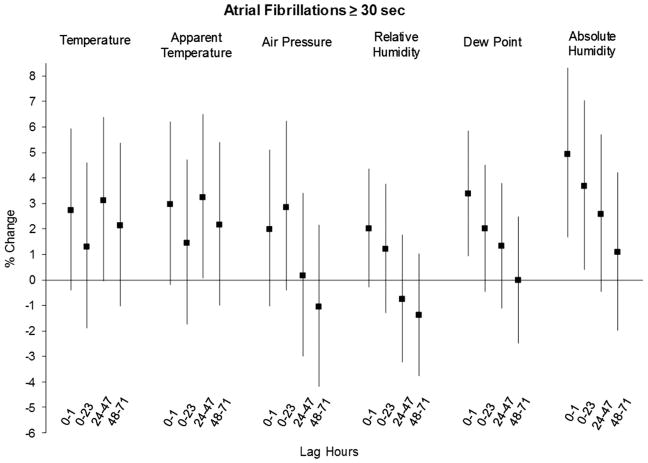FIGURE.
Percent change in the odds of atrial fibrillation associated with lower outdoor temperatures, air pressure, and humidity as a function of moving and lagged averages in the prior 72 hours. Lower temperature and apparent temperature in the prior 48 hours were positively associated with atrial fibrillation. Absolute humidity in the prior 2 hours had the strongest association; fibrillation the odds of atrial increased by 5% (95% confidence interval: 2%, 8%) for each decrease of 0.5 g/m3. Dew point and absolute humidity displayed a temporal pattern of weaker effects with increasing time since the atrial fibrillation event.

